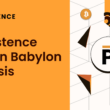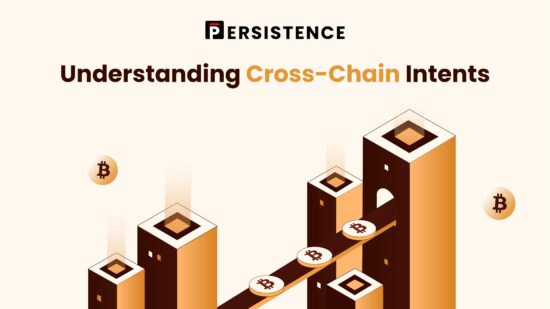Tl;dr
- Cross-Chain Intents are a groundbreaking concept in crypto, redefining transactions across blockchains.
- Intents specify desired transaction outcomes without providing conditions on the execution route – offering on-chain security and off-chain flexibility.
- They provide enhanced swap executions, unified liquidity, and improved interoperability for BTCfi and DeFi.
- Intents are a promising vision for interoperability, potentially surpassing existing cross-chain solutions.
As the cryptocurrency industry continues expanding, thousands of new tokens are entering the market across hundreds of different blockchains. Connecting these tokens together through a seamless token swapping infrastructure is essential, and a newly emerging technology is about to elevate the user experience for everybody as the industry heads toward chain abstraction.
We’ve experienced a wide range of token swapping solutions in the DeFi space. From AMMs to atomic swaps and cross-chain bridges to traditional peer-to-peer transactions, we’ve witnessed numerous solutions to swap assets across multiple ecosystems.
However, there’s a relatively newer player in town with the intent (no pun intended) to render previous cross-chain solutions obsolete.
Let us introduce Cross-Chain Intents.
Bridging Without Bridging: What Are Cross Chain Intents?
Traditionally, an intent is an expression of a purpose or goal. If a person intends to do something, they’re expressing their desire for an outcome to be achieved.
In the crypto world, intents alter the way a transaction is executed. They’re described as types of trades that specify the outcome of the desired transaction rather than the route of execution. Put simply; intents require users to specify the “what” of an outcome they want to achieve rather than “how” it should be executed.
Like bridges and AMMs, intents provide a way to transfer value. They can be single-chain intents (on one ecosystem) or cross-chain intents (across multiple blockchains).
While intents are an on-chain expression of a user’s desired action, they can be executed by anyone in any arbitrary way. As a result, they combine on-chain security with off-chain flexibility.
To put this into context, let’s assume an Ethereum user wants to swap ETH for USDT on-chain. Traditionally, they would use an AMM such as Uniswap through a specific pool to execute the transaction. Although AMMs are an industry-shifting technology that brought decentralized exchanges to Web3, they still provide constraints regarding platform rules, liquidity limits, and the potential for slippage.
On the other hand, if the user utilized an intent-based transaction for this swap, they would broadcast their willingness (intent) to swap ETH for a minimum amount of USDT. In this case, the route would not be specified, and third-party actors, known as solvers, would be responsible for filling out the order for a fee.
Providing the Expertise: Who Are Solvers?
Solvers are experts who determine the best path to provide a solution to a user’s intent by leveraging a range of options to achieve the desired outcome. Solvers could be regular users, DEX aggregators, market makers, or even advanced AI systems.
Handing off cross-chain transactions to an expert isn’t a new concept. The methodology is used in every industry as it helps improve efficiency, provide the best prices, and enhance the user experience.
To put this into perspective, let’s take an analogy where a user might want to deliver a package to another country. The user wouldn’t map out each leg of the journey and pinpoint the best route across borders. Instead, they would use a service to execute the delivery, allowing the experts to handle the logistics.
This is basically what intents provide.
They remove the logistical complications of navigating multiple ecosystems for users and provide better cost efficiency by using experts to execute the swaps.
Solvers aggregate on-chain and off-chain liquidity and usually take on finality risk for users by fronting their own funds to execute the intent before the payment is made.
Providing Value: Intents and Their Role on the Infrastructure Level
Intents are set to have a huge role on the infrastructure level, providing considerable value by enabling seamless cross-chain swaps without any of the complexities surrounding bridging.
Users don’t care about how their transaction goal is achieved. Whether using a bridge, CEX, or a cross-chain swapping service, users just want to transfer value from one chain to another, and they want the process to be done quickly and cheaply – which is exactly what cross-chain intents offer.
Intents provide a route to transfer a transaction’s complexity from a regular user to a skilled solver. They allow for a crypto world where user experience is optimized, and chain abstraction is real.
Here are some of the benefits that intents can provide:
Improved Execution
Intents can provide MEV protection for swappers by utilizing an expert to conduct a cross-chain swap because no single transaction route is susceptible to sandwich attacks. Solvers will take on the entire risk to execute the intent according to the criteria, with the user already specifying their desired outcome.
Unified Liquidity
Cross-chain intents also help to unify liquidity across multiple sources. Without intents, users are typically constrained to a limited pool of liquidity. Intents change this by allowing users to easily tap into the aggregate liquidity of solvers. These experts are connected to multiple liquidity sources across a variety of chains, helping to bring that source of liquidity closer to the user.
Improved Interoperability for BTCfi
Most importantly, cross-chain intents can improve interoperability.
For eg, the number of projects in the BTCfi ecosystem is growing. There are now dozens of BTC Layer-2s, with most of them having their own BTC derivatives and variants. While BTCfi is building, the liquidity remains fragmented. Unfortunately, swapping one BTC derivative for another is difficult without multiple operations across different blockchains.
Cross-chain intents can help solve this interoperability problem and bring the BTCfi ecosystem closer together.
Finally, cross-chain intents add value to users by potentially making cross-chain swaps cheaper and faster. This is primarily because solvers compete with one another to ensure an intent is finalized at the best prices. Like in any industry, competition helps drive down costs and provide better service.
How Intents Enhance User Experience in DeFi and BTCfi
Intents are the last piece of technology in the BTCfi infrastructure that could cause the sector to take off and start catching up to the TVL of Ethereum DeFi.
While intents help enhance interoperability and efficiency for cross-chain swaps, their most important benefit is an enhanced user experience.
One major reason for the lack of mass adoption in BTCfi is the complexities associated with cross-chain transactions. Intents make these cross-chain interactions seamless, making DeFi more accessible.
With a BTCfi intent-based cross-chain solution by Persistence One, users would no longer need to navigate through multiple blockchains or connect different wallets as they search for the best venues with the best rates to execute a cross-chain swap. Instead, they can rely on the intent-based architecture to specify what they want and trust that an expert will handle the entire process for them.
Conclusion: Are Intents Here to Stay?
Overall, while industry experts are still split on the verdict, intents seem to be the future of cross-chain interoperability.
Alongside providing numerous benefits for users by removing the complexities of navigating through multiple DeFi ecosystems, intents also help enhance the user experience and increase crypto adoption. Making cross-chain swaps seamless can lead to chain abstraction, helping to unify the entire crypto industry and allow it to reach a mass market.
Persistence One is currently developing an intent-based architecture for the BTCfi landscape. This architecture will allow users to achieve cross-chain, low-slippage swaps seamlessly through a user-friendly interface. Be sure to follow us on social media to stay updated on the developments.
About Persistence One
Persistence One is building a Bitcoin interoperability solution to enable cross-chain BTC swaps across Bitcoin Layer 2s.
The rapid rollout of Bitcoin L2s and side chains has led to fragmentation, hurting BTCfi scalability. Using the power of intents, Persistence One will enable users to move assets across Bitcoin Layer 2s more efficiently than traditional bridging, offering fast, secure, zero-slippage cross-chain swaps.
Twitter | LinkedIn | Telegram | YouTube | Reddit | [email protected]





